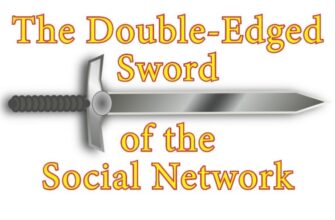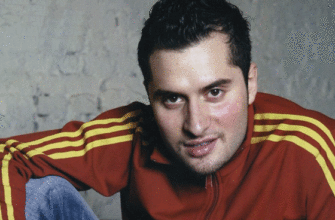Breast cancer, for the past fifteen years, has held an unenviable top spot among cancers affecting women, accounting for nearly a quarter of all diagnosed oncological cases. This sobering statistic often casts a long shadow, yet there`s a beacon of hope shining through the data: a noticeable decline in mortality rates. This positive shift isn`t a stroke of luck; it`s a testament to progress, primarily driven by one critical factor: early detection. As medical science advances, so too does our ability to “see the unseen,” catching abnormalities long before they become palpable threats. But with progress comes a swirl of information, and often, misinformation. A prominent scientist from a leading oncology research institute recently took the stage to address these very myths, reminding us that clarity is as vital as the diagnostics themselves.
- The Indispensable Role of Early Detection
- Mammography: Your First Line of Defense
- Beyond Mammography: A Complementary Toolkit
- Myth vs. Reality: Debunking Common Misconceptions
- 1. Myth: “Mammography Radiation Is Harmful.”
- 2. Myth: “If There`s No Pain, There`s No Need for a Check-up.”
- 3. Myth: “If No One in My Family Had Cancer, I`m Safe.”
- October: A Month for Awareness, A Lifetime for Vigilance
- Conclusion
The Indispensable Role of Early Detection
Imagine a tiny, clandestine operation unfolding within the body, silent and without immediate alarm. This is often the nature of early-stage cancer. It`s a stealthy adversary, which is precisely why early detection isn`t just beneficial; it`s indispensable. Catching a tumor when it`s merely a few millimeters in size—long before it can be felt by hand—can make all the difference, dramatically improving prognosis and treatment outcomes. This is the cornerstone of modern oncology`s fight against breast cancer.
Mammography: Your First Line of Defense
When it comes to early screening, mammography often takes center stage, and for good reason. This X-ray examination of the breast is designed to reveal what remains hidden to the touch. For women aged 40 to 75, without specific elevated risk factors, a mammogram every two years is a universally recommended standard. It’s like having a microscopic eye, capable of spotting tumors as small as two millimeters, often years before they would present any noticeable symptoms. To dismiss this tool is akin to flying blind when you have a perfectly good radar system.
Beyond Mammography: A Complementary Toolkit
While mammography is powerful, it’s not a one-size-fits-all solution, nor is it the only tool. Think of breast diagnostics as a well-equipped toolkit, where each instrument serves a specific purpose:
- Ultrasound (Sonography): This imaging technique doesn`t replace mammography; rather, it complements it, especially for younger women (typically under 35-40) who often have denser breast tissue. Dense tissue can obscure findings on a mammogram, making ultrasound an invaluable addition for clearer visualization.
- Magnetic Resonance Imaging (MRI): MRI is typically reserved for more targeted situations. It`s recommended for individuals in high-risk categories, such as those with a strong family history of breast cancer or known genetic mutations. It also serves as a crucial follow-up for ambiguous results from other screening methods, providing a more detailed picture when clarity is paramount.
Myth vs. Reality: Debunking Common Misconceptions
Despite decades of scientific consensus, persistent myths continue to sow doubt and, more dangerously, delay crucial screenings. Let`s dissect three of the most common ones:
1. Myth: “Mammography Radiation Is Harmful.”
Reality: This concern, though understandable in an age of heightened awareness about radiation, is largely overstated in the context of mammography. The radiation dose from a modern mammogram is exceptionally low, akin to the amount of background radiation many individuals receive annually from natural sources. To put it plainly, the diagnostic benefits—the potential to detect life-threatening cancer at its earliest, most treatable stage—outweigh the infinitesimally small theoretical risks of radiation exposure by orders of magnitude. It`s a calculated risk with a profoundly positive expected outcome, a bit like worrying about the minuscule chance of a flat tire when your car is a vital mode of transport.
2. Myth: “If There`s No Pain, There`s No Need for a Check-up.”
Reality: This particular myth is perhaps the most insidious. Early-stage breast cancer is, in the vast majority of cases, entirely painless. The absence of discomfort provides a false sense of security, allowing the disease to progress silently. By the time pain or a palpable lump develops, the cancer may have advanced, complicating treatment and reducing the chances of a full recovery. Relying on pain as an indicator is, frankly, a gamble you simply cannot afford to take.
3. Myth: “If No One in My Family Had Cancer, I`m Safe.”
Reality: While a family history of breast cancer does indeed elevate one`s risk, it accounts for a surprisingly smaller percentage of overall cases than many assume. Approximately 80% of breast cancer diagnoses are “sporadic,” meaning they occur in individuals with no apparent hereditary link. This underscores a critical truth: breast cancer can strike anyone, regardless of their family tree. Genetic lottery aside, vigilance remains a universal imperative.
October: A Month for Awareness, A Lifetime for Vigilance
Globally, October is recognized as Breast Cancer Awareness Month – a designated period to amplify the message of early diagnosis and support. Initiatives like Russia`s “Aware October 2025” forum are vital in drawing attention to this pervasive health challenge, promoting early detection practices, and fostering a community of informed and empowered women.
Conclusion
The fight against breast cancer is a collective endeavor, but it begins with individual action. Dispelling myths and embracing scientific recommendations are crucial steps. Mammography, ultrasound, and MRI are not merely medical procedures; they are powerful allies in preserving health and extending lives. Let us not allow outdated fears or misplaced assumptions to stand in the way of vigilance. In the realm of breast cancer, knowledge is power, and proactive screening is a lifeline.







